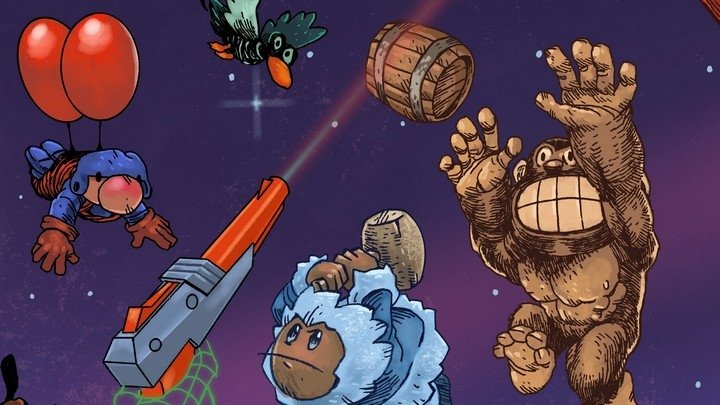On NES Works: Third parties continue to grapple with the idea of quality
The NES Works series continues powering through the NES 1986 library in a desperate race to Gradius, aka the one genuinely excellent third-party release from the latter half of the year. I have to say, this project has given me a new appreciation for Black Box games.
I became an NES owner at the end of 1987, by which time there were enough great post-launch-era releases available that the Black Box games had a distinct whiff of the archaic about them. The unified packaging design Nintendo initially used for its own releases worked great as branding in the early days, setting the NES apart from competing platforms, but it became something of an impediment once more sophisticated releases began to arrive from other publishers. Nintendo recognized it, too, and they began to phase out the Black Box format around the time I picked up the console: Zelda shipped in a gorgeous gold set, Metroid and several other 1987 releases came dressed in silver, Punch-Out!! broke the box art boundaries with a full-bleed photo of Mike Tyson, and Ice Hockey used the Black Box style in blue with a photo replacing the pixel art. By the time Super Mario Bros. 2 shipped at the end of 1988, the only remaining vestige of the Black Box style was the skewed typography for the logo and subtitle — and even that would end up abandoned by the wayside with 1989 releases like Dragon Warrior and Faxanadu.
All of this is to say, Black Box games felt like old news by the time I acquired an NES, and I've had a hard time giving them a fair shake due to that perception. But despite their simplicity, they demonstrate a lot of interesting and inventive ideas. And nothing has driven that home quite like these early third-party releases for the system.
One of the more famous anecdotes about the NES library is that Howard Philips served as a sort of localization filter to weed out the bad games and make sure only the best Japanese titles were brought into English. I am increasingly curious to know whether that policy and process were in place from the beginning, or if Nintendo asked Philips to begin weeding out the garbage after these first few releases hit the ground with the wet, jarring sound of a million weeping children. I am generally able to find some merit in questionable old games by viewing them through the perspective of their time and place — see last week's Chubby Cherub video for an example — but I honestly can't find anything redeeming about Tag Team Wrestling, even if I try to adopt the mindset of an eight-year-old circa 1986. It's bad now, and every documentarian instinct I have tells me it was also bad then.
On the plus side, it only gets better from here. At least until the opportunistic Western publishers arrive on NES in 1988. But that's a full year of increasingly good Japan-origin games to look forward to on NES Works. So that's good!




